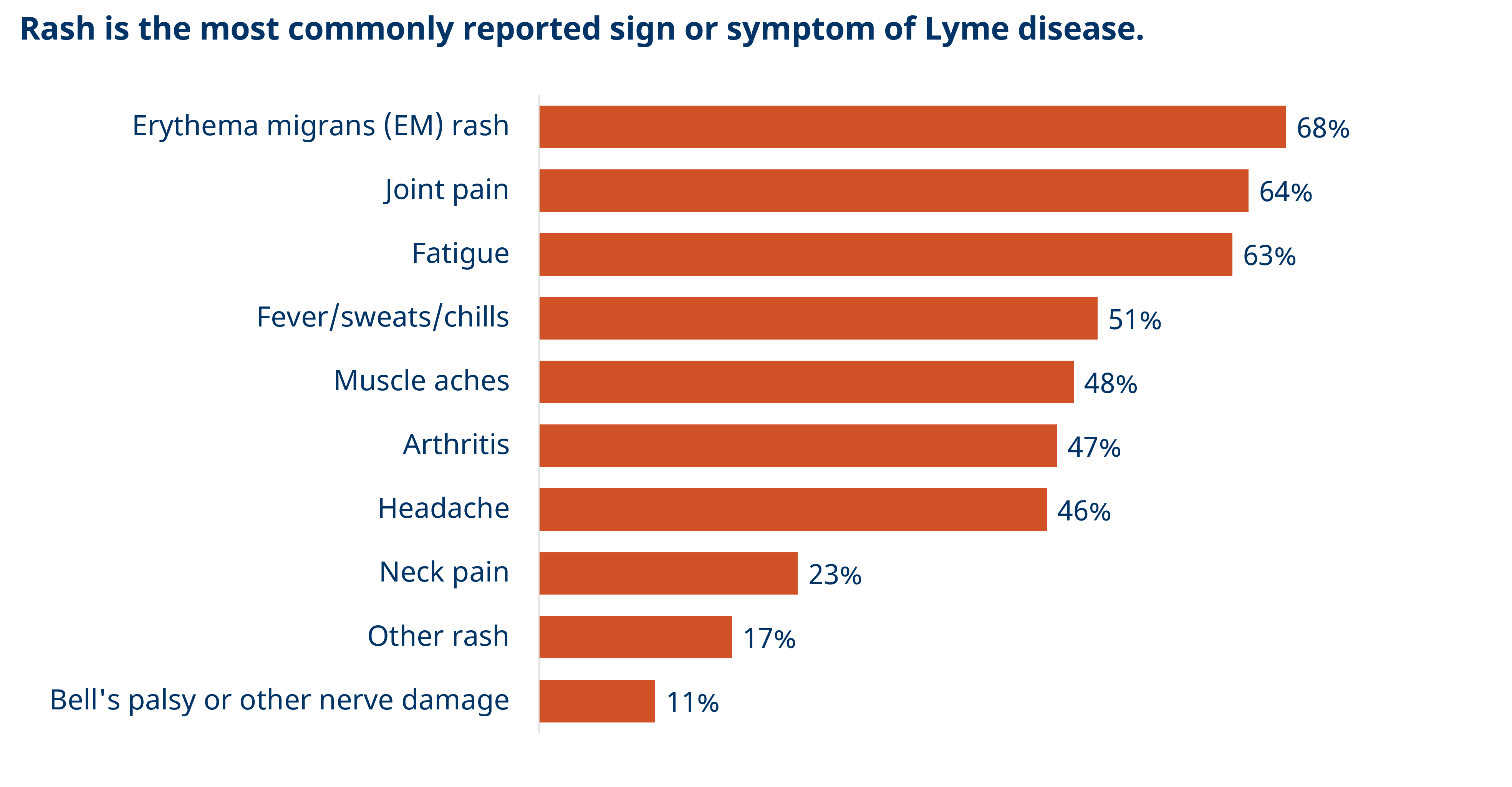Lyme Disease: The Most Common Tick Bite Illness in Vermont
Lyme disease spreads through the bite of an infected blacklegged tick. There are no vaccines available to protect against Lyme disease, but clinical trials are underway. The best way to protect yourself from Lyme disease is to prevent tick bites, remove attached ticks as soon as possible, and call your doctor if you get sick after a tick bite.Learn more about how to prevent tick bites and tick bite illnesses
The most common symptom of Lyme disease is a rash that may appear 7–14 days after a tick bite and then gradually expands from the area of the bite. The rash may be warm, but it's not usually painful or itchy. Other common symptoms, like joint pain, fatigue, fever, and muscle aches, typically begin three to 30 days after a tick bite.
Lyme Disease Risk in Vermont
- Lyme disease is most commonly reported in the southern half of the state, but Vermonters in every county can be exposed.
- Anyone get Lyme disease, but males get it more frequently than females.
- Boys aged 5–14 and older men are at highest risk.
- The risk is highest in June, July, and August. But cases are reported every month of the year.





